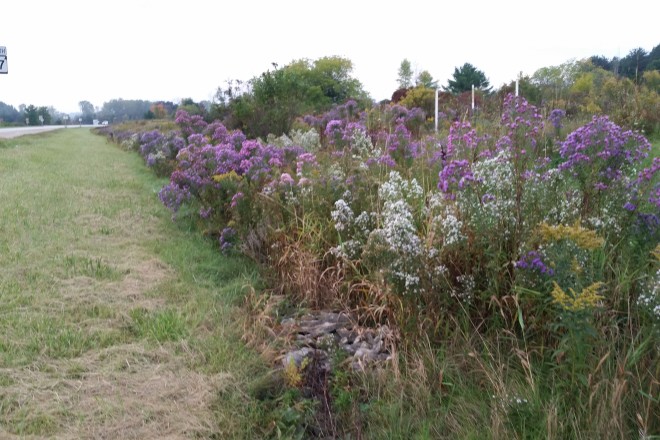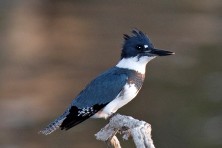OutDOORs with Coggin Heeringa: A Case for Not Mowing
- Share
- Tweet
- Pin
- Share

Trees are showing tantalizing hints of yellow and red. The fall color season is upon us. Motor coach tourists, bicycles riders, festival goers, weekenders, and the lucky people who live on the Door Peninsula have taken to the highways and byways to celebrate the beauty of October. Alas, they are missing one of the most colorful opportunities of fall: enjoying roadside flowers.
There are a few rare and precious places where, for one reason or another, wildflowers edge the roads. But in most of Door County, mowed grass stretches from shoulder to tree line. Why?
Admittedly, there are some very good reasons for mowing road margins: vehicles need a place to pull off in an emergency and line of sight is important at intersections and driveways.
Some have argued that mowing the full right-of-way prevents deer/vehicle collisions. I like to depend on scientific research, but there are astonishingly few scientific studies on this topic (you’d think insurance companies would be on this).
However, in 2012, the Federal Highway Administration published a study in which they looked at 21 states that had reduced roadside mowing as an economic measure (the money these states saved was significant!) and found very little change in the number of vehicle/deer collisions after mowing was reduced. In fact, according to the report, “Mechanical trimming of woody vegetation during midsummer has been shown to improve the digestibility in subsequent regrowth, making it more attractive to deer (or any other animals that feed or browse) for up to three years.”
So, at least according to one study, there is no statistical difference between standard and reduced mowing practices, but fall is the time for the deer rut, so drive watchfully, especially at dawn and dusk, whether or not the roadside is mowed.
Then, there is the persistent rural myth that goldenrod causes hay fever.
Donald and Lillian Stokes addressed this argument in their nature guide Enjoying Wildflowers: “Ambivalence might best describe people’s feelings about goldenrod. They appreciate the beauty of the flowers but they also associate them with the stuffy noses and watery eyes of allergies from the pollen. In actual fact, their reputation for causing allergies is almost totally undeserved. In August, only one to two percent of the pollen in the air is from goldenrod. It comes from a plant blooming at the same time but rarely noticed – ragweed.”
According to Dr. Peter Sigmann, President of the Door County Chapter of the Wild Ones, “Ragweed pollen causes respiratory misery for many people. The ragweed plant does not compete well with other vegetation, but it thrives where grass has been cut short. The air currents generated at the highway help the ragweed pollen become airborne.”
Thrive is the right word. Drive through Door County and everywhere roadsides have been mowed, you will see (unless your eyes are watering) lush stands of ragweed the size of shrubs.
It doesn’t have to be this way. We could change the mowing schedules to foster the fall colors of roadside flowers. And if we did that, we would also improve the habitat for ground-nesting birds and insect pollinators, and, important this time of year, provide food for migrating hummingbirds and monarch butterflies.
October is our most colorful month, but it would be far more colorful if our roads were lined with the purples, whites and golds of fall flowers.
Coggin Heeringa is the Director of Crossroads at Big Creek and Instructor of Environmental Studies at the Interlochen Arts Camp.



